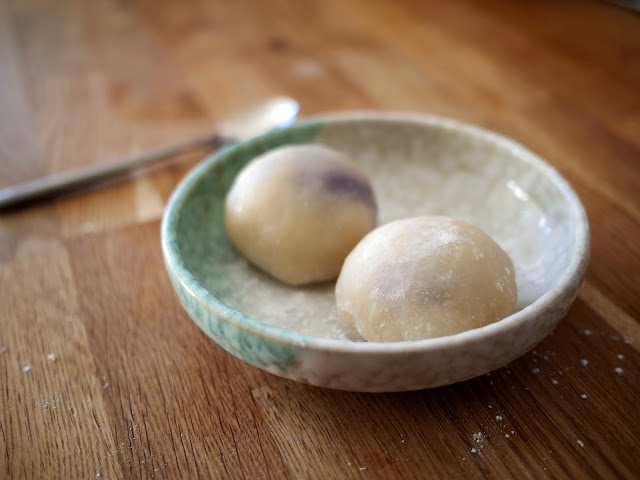Greenberry Café, Primrose Hill
A few days ago I suddenly realised that I had not written a restaurant post since September last year. I thought about writing about ramen but there are quite a few out there (see here and here), so I am going to leave it short and sweet - I LOVE BONE DADDIES. That is all.
A few days ago I suddenly realised that I had not written a restaurant post since September last year. I thought about writing about ramen but there are quite a few out there (see here and here), so I am going to leave it short and sweet - I LOVE BONE DADDIES. That is all.
But today I would like to share with you a very enjoyable meal that I had earlier this year at the Greenberry Café, Primrose Hill. I first met the head chef PC a couple of years ago at The Long Table. At that time he was about to embark on a culinary trip around the world. His impressive experience at some of the best restaurants in London (e.g. Chez Bruce, Cinnamon Club and Claridge's) had given me much anticipation for his return so I could try his food. Coincidentally I also know Hannah - a Leith’s trained chef who also works at the café - at a Jewish supper club she used to run at her home in Islington last year. She is renowned for her love of cakes, and she is very good at making them. Her strawberry cheesecake was so good that my husband ate three slices at her supper club.
I went to the Greenberry Café with my girlfriends for a late Sunday lunch. The café was very easy to find, but somehow one of us managed to get lost and only got there an hour after our booking time! It was a very busy Sunday afternoon, thankfully the staff were very understanding and we were given the menu and some Japanese pickles while we waited. The menu could be a little overwhelming at first – there were bar snacks, breakfast, "traiteur", a la carte and desserts, all on one page. But each section was well thought out to cater for guests visiting at different times of the day. We were encouraged to mix and match, from classic British bites to interesting international dishes like ceviche, miso aubergines and soba noodles, which I was pleasantly surprised to see on the menu.
We started the meal with some light dishes and cold meat plates. Among the starters we were most impressed by the house cured spice beef. It came in relatively thick slices with a few gherkins on the side. The beef itself was dark and rich, the slight chewiness gave each mouthful an extra meaty sensation.
Top: Endive, Roquefort and pecan salad. Middle: Terruel Lomo D.O.P. Bottom: Spice cured beef.
Because we were extremely hungry when we ordered the mains, we all opted for the heavy dishes on the menu (we even did a ‘go-large’ on the miso aubergines!). I ordered the roast cod, and adored it. The flesh was cooked just right with a lovely silky texture, which together with the gentle sour note from the tamarind puree made for a highly addictive dish, and I just wanted more. Another highlight of the meal was the pulled pork bun. The pork was heavily seasoned but not overly salty. Eating the bun was a messy job but it worked in my favour as I could just nibble the flakes off my friend’s plate when she was not looking.
Top: Miso glazed aubergines and smoked aubergine relish. Second: Pulled pork bun. Third: Salt beef sandwich. Bottom: Roast cod, quinoa and tamarind puree.
We were all full up by the time we finished the mains, but it would be foolish to miss Hannah’s desserts. So we ordered the two most tempting desserts to share between six of us – an apple tarte tatin with cinnamon ice cream and a St. Emilion au chocolat. And yes we chose well. SO WELL. The pastry of the tatin was beautifully brown and crispy. It was a hearty portion but soon demolished out of greed. The St. Emilion au chocolat is a no-bake chocolate cake, think heavenly rich dark chocolate mixed with crunchy marcaroon.
It was a busy Sunday so the service was a little slow at times, but nonetheless the staff were cheerful and accommodating. Considering the amount of food we ate, the bill of £25 per person including service seemed very reasonable to me. It is the kind of place I feel I could drop in any time of day just for a cup of coffee or a pastry, a light lunch, or for a mid-week night out. I just wish it was closer to home!





















